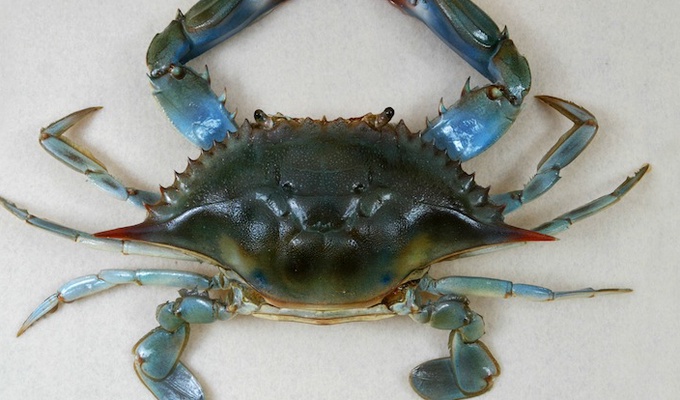Callinectes sapidus, the blue crab, Atlantic blue crab, or regionally as the Chesapeake blue crab, is a species of crab native to the waters of the western Atlantic Ocean and the Gulf of Mexico, and introduced internationally.
C. sapidus is of considerable culinary and economic importance in the United States, particularly in Louisiana, the Carolinas, the Chesapeake Bay, Delaware, and New Jersey. It is the Maryland state crustacean and the state's largest commercial fishery. Due to overfishing and environmental pressures some of the fisheries have seen declining yields, especially in the Chesapeake Bay fishery.
Unlike other fisheries affected by climate change, blue crab is expected to do well; warming causes better breeding conditions, more survivable winters, and a greater range of habitable areas in the Atlantic coast. Whether this will have negative effects on the surrounding ecosystems from an increased crab population is still unclear.
